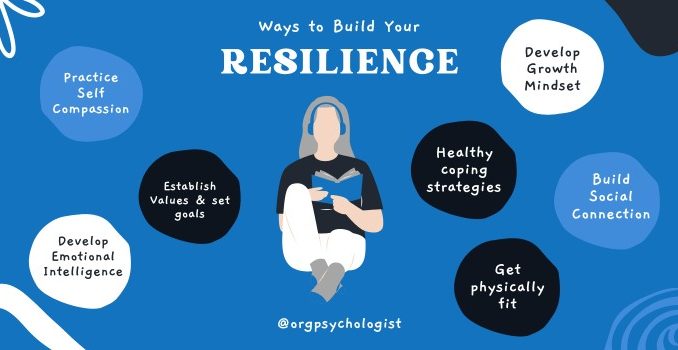
Resilience is often described as the ability to bounce back, but in reality, it is much more than recovery. It is the strength to adapt, endure, and grow in the face of adversity. Tough times come in many forms—economic uncertainty, professional setbacks, health challenges, or personal loss—and while we cannot always control what happens to us, we can control how we respond. Mental resilience is not something people are either born with or not; it is a skill that can be developed over time with deliberate practice and self-awareness. In challenging moments, this resilience acts as a buffer, allowing individuals to navigate stress without being consumed by it, and to emerge from difficulty not only intact but stronger.
One of the most important elements of building resilience is shifting perspective. In the midst of struggle, it is easy to view problems as insurmountable and focus solely on what has been lost. Yet resilience comes from learning to reframe challenges as opportunities to learn or reset. This does not mean minimizing hardship or pretending everything is fine, but rather acknowledging reality while also looking for the lessons hidden within. For example, a professional facing unexpected job loss might initially feel defeated, but over time may see the event as an opportunity to reassess career goals, develop new skills, or pursue a path more aligned with long-term fulfillment. The ability to move from despair to possibility is at the core of resilience.
Resilience also draws heavily on routines and habits that create stability. During uncertain times, small rituals such as regular exercise, consistent sleep, or even taking breaks for fresh air serve as anchors that keep the mind steady. These practices provide a sense of control when external events feel unpredictable. Something as simple as starting the morning with a mindful pause, a journal entry, or a walk can reinforce a sense of continuity that counters the chaos of tough circumstances. Over time, these habits build mental endurance, much like training muscles through repeated exercise. Just as athletes rely on consistent conditioning to perform under pressure, individuals who nurture grounding routines are better prepared to face adversity when it comes.
Support systems are another cornerstone of resilience. While resilience is often portrayed as individual strength, no one is meant to navigate difficulty entirely alone. Trusted colleagues, mentors, family, and friends provide perspective, encouragement, and sometimes practical assistance. Having people to lean on can prevent stress from becoming overwhelming. Equally important is being willing to seek support rather than viewing it as a sign of weakness. In professional settings, this might mean being transparent with a team about challenges or asking for guidance from a leader. In personal life, it might mean sharing burdens with a close friend. These connections act as safety nets that remind us we are not isolated in our struggles.
Resilience is also strengthened through the ability to stay present. Anxiety thrives when the mind becomes fixated on uncertain futures, and regret grows when it lingers on the past. Training the mind to focus on the present moment—through mindfulness, breathing practices, or intentional pauses—reduces the mental load of worrying about what cannot be controlled. When people center themselves in the present, they often find that challenges feel less overwhelming and solutions become clearer. This sense of presence is not about ignoring problems but about giving the mind enough clarity to respond effectively.
Adaptability is another critical aspect of resilience. In times of upheaval, rigid thinking can intensify stress, while flexibility allows individuals to adjust to new circumstances without losing their footing. This might mean shifting professional strategies when markets change, rethinking routines during health setbacks, or finding new ways to connect when traditional social structures are disrupted. Those who practice adaptability see change not only as a disruption but also as a natural part of life. This mindset reduces resistance and fosters creativity, helping people to discover pathways forward even when old methods no longer work.
Equally important is self-compassion. Tough times often bring self-criticism, with individuals blaming themselves for not being stronger, faster, or more capable. Yet resilience thrives not on harshness but on kindness. Treating oneself with the same patience and encouragement offered to a friend allows for recovery without additional emotional burden. Self-compassion acknowledges difficulty while affirming worth, creating a healthier internal dialogue that supports perseverance rather than undermines it.
Finally, resilience grows through a sense of purpose. People who connect challenges to something larger than themselves—whether a professional mission, personal values, or the well-being of loved ones—find strength that transcends immediate struggles. Purpose acts as a compass that directs energy and focus even in uncertain terrain. For example, an entrepreneur weathering financial hardship may draw motivation from a commitment to building something meaningful, while a parent may find resilience in the desire to create stability for their children. Purpose does not erase difficulty, but it provides direction and meaning that can transform endurance into growth.
In the end, building mental resilience in tough times is about cultivating habits, perspectives, and connections that allow us to withstand hardship without losing sight of who we are or where we are going. It is a practice of balance: staying grounded while remaining flexible, seeking support while nurturing independence, acknowledging pain while holding onto possibility. Tough times will always test the limits of patience and strength, but resilience ensures that challenges do not define us. Instead, they become catalysts for growth, reminding us of the depth of human adaptability and the capacity to move forward with clarity, courage, and renewed purpose.